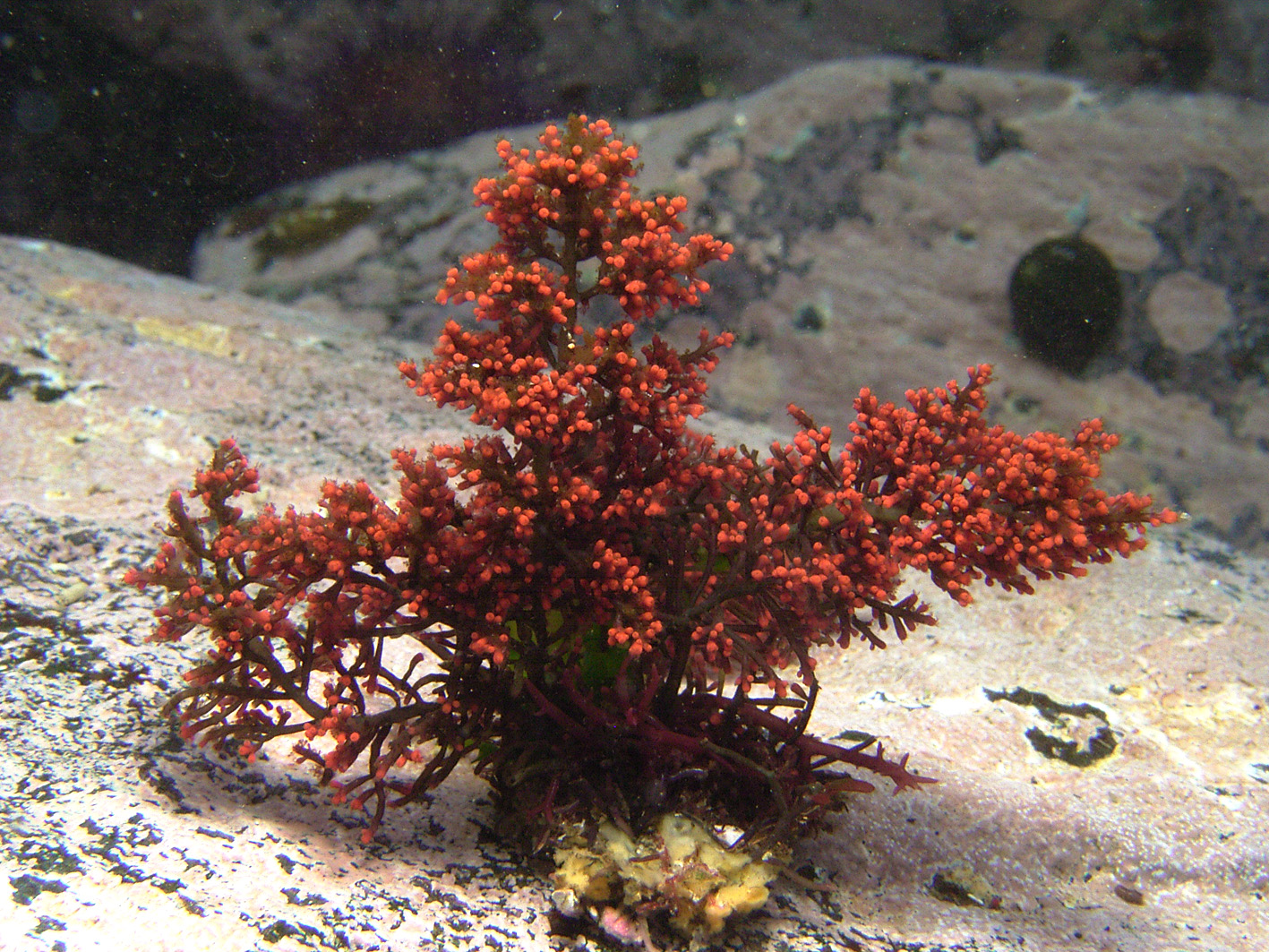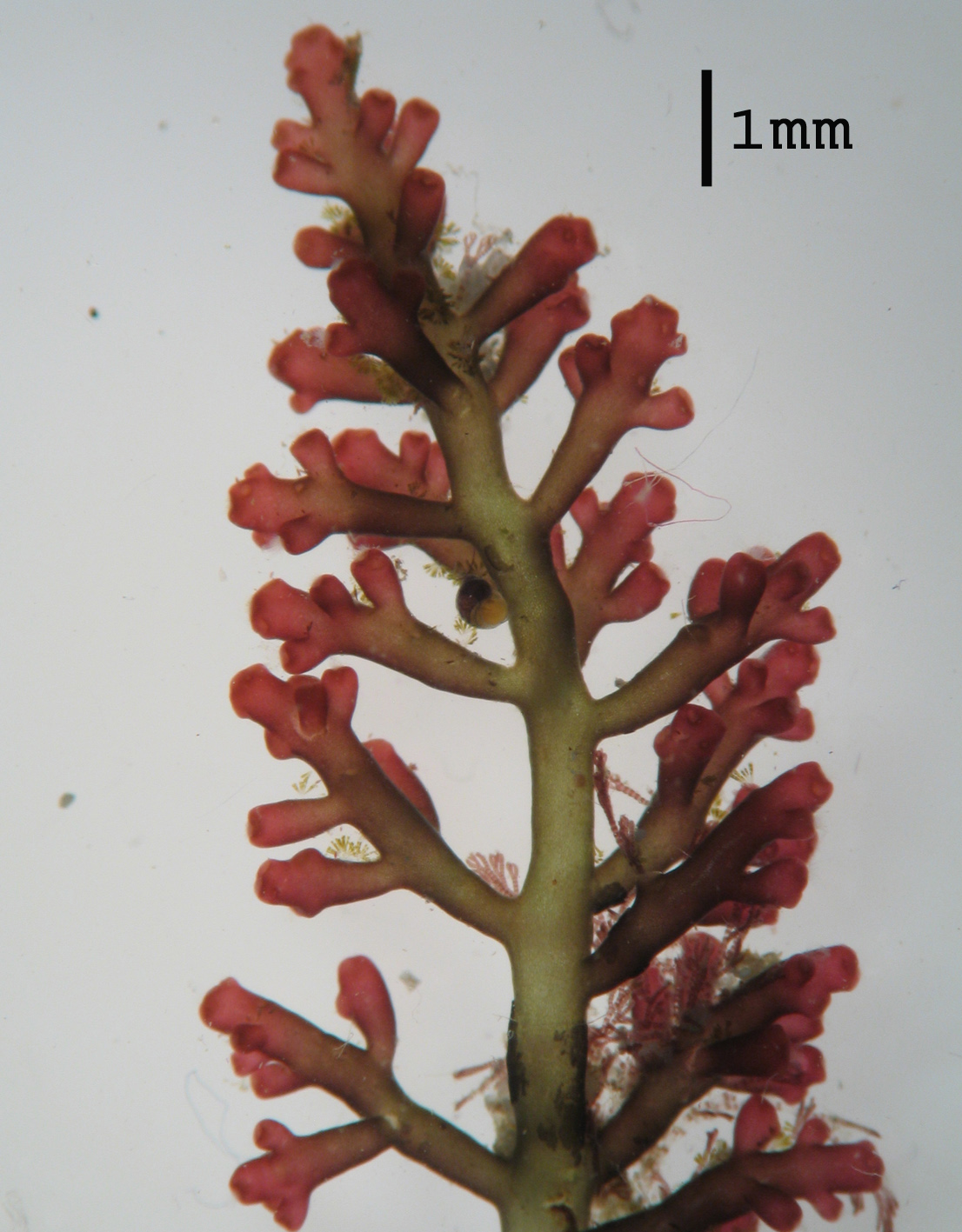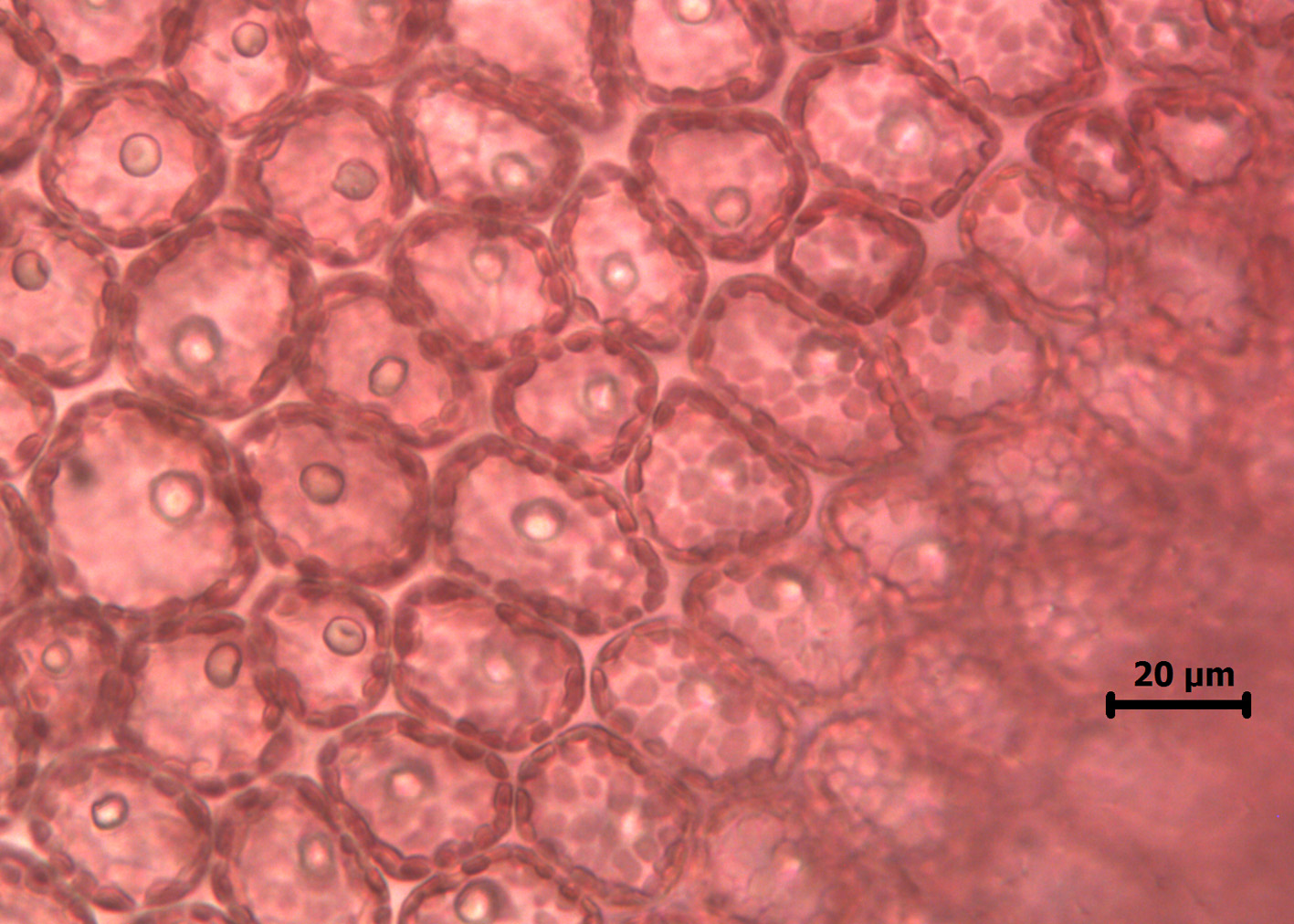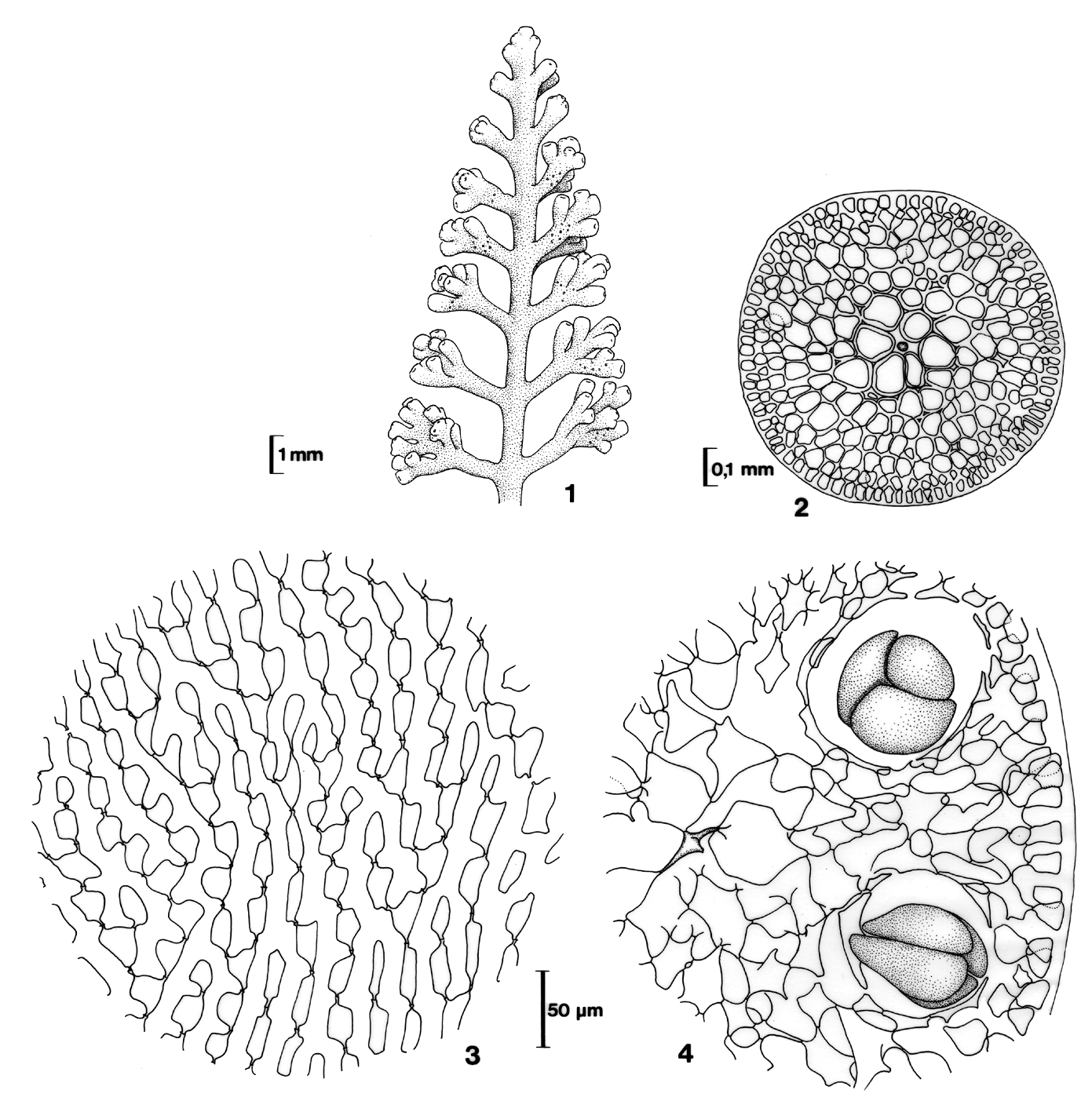Seaweeds of the South African South Coast


Order Ceramiales
Family Rhodomelaceae
Laurencia natalensis Kylin 1938: 24, pl. 8: fig. 21
Plants green with orange to red apices, forming erect tufts up to 10 cm tall. Stoloniferous basal parts bearing several upright axes of 0.7-1.0 mm diameter; uprights radially branched in many (usually 3, but up to six) orders, branches shorter toward apices, imparting pyramidal outline to thallus. Ultimate branchlets cylindrical to clavate, fairly crowded in fertile thalli. In cross section of main axis central and pericentral cells easily distinguished; medullary cells moderately thick-walled, with ocassional special wall thickenings. Cortical cells 25-30 µm high, each containing 1 corps en cerise. Tetrasporangia borne in swollen terminal branchlets, tetrahedrally divided, 60-80 µm in diameter. Sexual structures not seen.
Collections, ecology and regional distribution
Recorded from Pearly Beach in the Western Cape to northern KwaZulu-Natal (21-58). Found on wave-exposed shores in the lower eulittoral and shallow sublittoral zones; often associated with sand cover.
Word distribution: Also reported from East Africa, Sri Lanka, Vietnam and Mauritius (Guiry & Guiry 2017).
Type locality: Isipingo, KwaZulu-Natal, South Africa (De Clerck et al. 2005).
Note: A DNA study of South African Laurencia supported this as a valid species (Francis et al. 2017), but described a morphologically similar new species (L. multiclavata) with which it can be confused. The main differences are in branching pattern: L. natalensis has narrow radial branching and a pyramid-shaped outline, whereas L. multiclavata has a generally wider, polystichous branching pattern, fewer branch orders and no pyramidal outline. Furthermore, where L. natalensis has one corps en cerise per outermost cortical cell, L. multiclavata has 2-4.

Laurencia natalensis, Tsitsikamma.

Laurencia natalensis, showing radial branching and elongated pyramidal outline.

Laurencia natalensis, surface view of outer cortical cells, each with one corps en cerise.

Laurencia natalensis. 1. Thallus apex (tetrasporiferous). 2. Cross section. 3. Surface view of cortex. 4. Cross section of tetrasporiferous ramulus. Reproduced from Stegenga et al. (1997).
References Laurencia natalensis
De Clerck, O., Tronchin, E. M., & Schils, T. 2005. Red algae. In: De Clerck, O., J.J. Bolton, R. J. Anderson and E. Coppejans, 2005. Guide to the Seaweeds of Kwazulu-Natal. National Botanic Garden of Belgium, Brussels (Scripta Botanica Belgica), pp. 130-269.
Francis, C.M., Bolton, J.J., Mattio, L., Mandiwana-Neudani, T. & Anderson, R.J. 2017. Molecular systematics reveals increased diversity within the South African Laurencia complex (Rhodomelaceae, Rhodophyta). Journal of Phycology 53: 804-819.
Guiry, M.D. & Guiry, G.M. 2017. AlgaeBase. World-wide electronic publication, National University of Ireland, Galway. http://www.algaebase.org; searched on 18 April 2017.
Kylin, H. (1938). Verzeichnis einiger Rhodophyceen von Südafrika. Acta Universitatis Lundensis 34(8): 1-26, 10 figs, 8 plates.
Cite this record as:
Anderson RJ, Stegenga H, Bolton JJ. 2016. Seaweeds of the South African South Coast.
World Wide Web electronic publication, University of Cape Town, http://southafrseaweeds.uct.ac.za; Accessed on 07 January 2026.